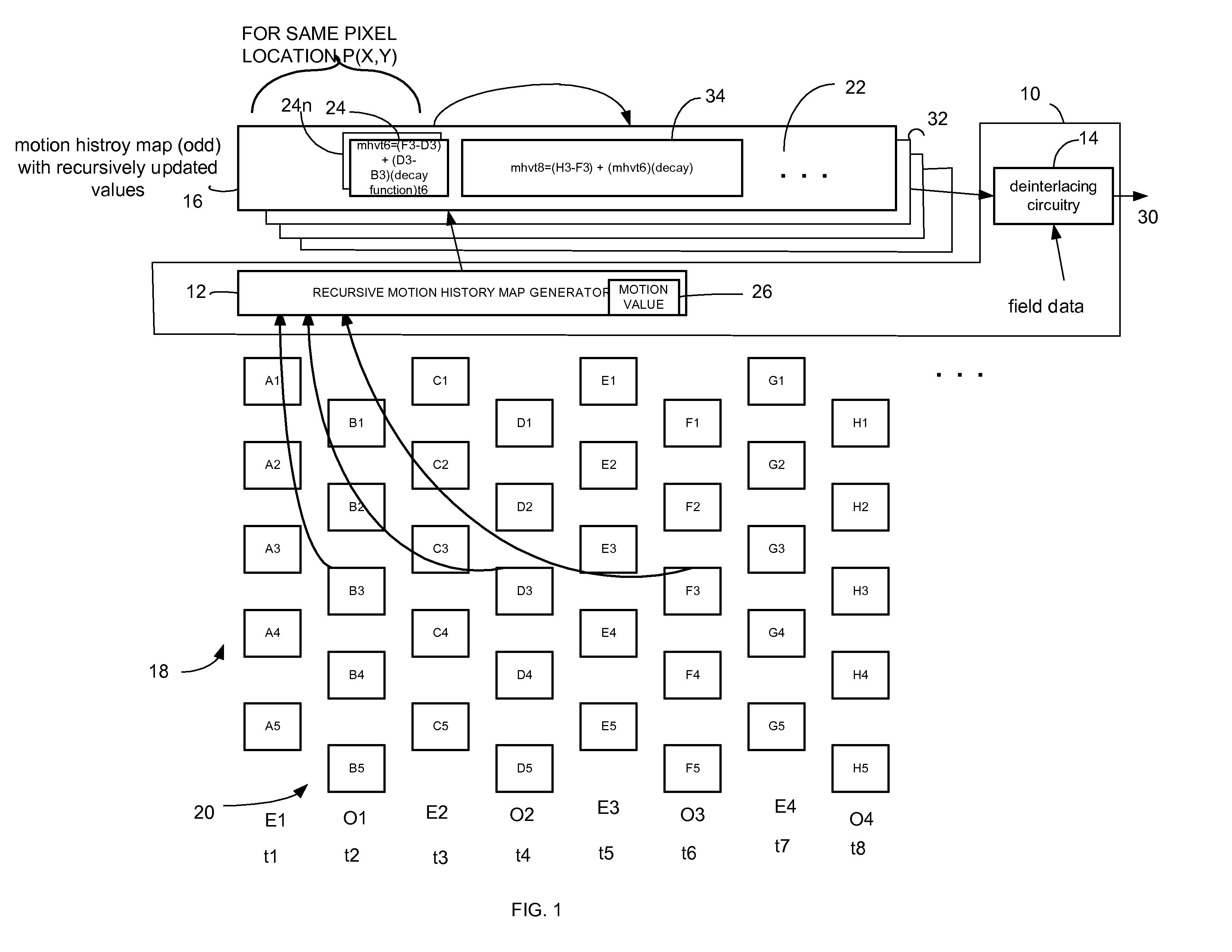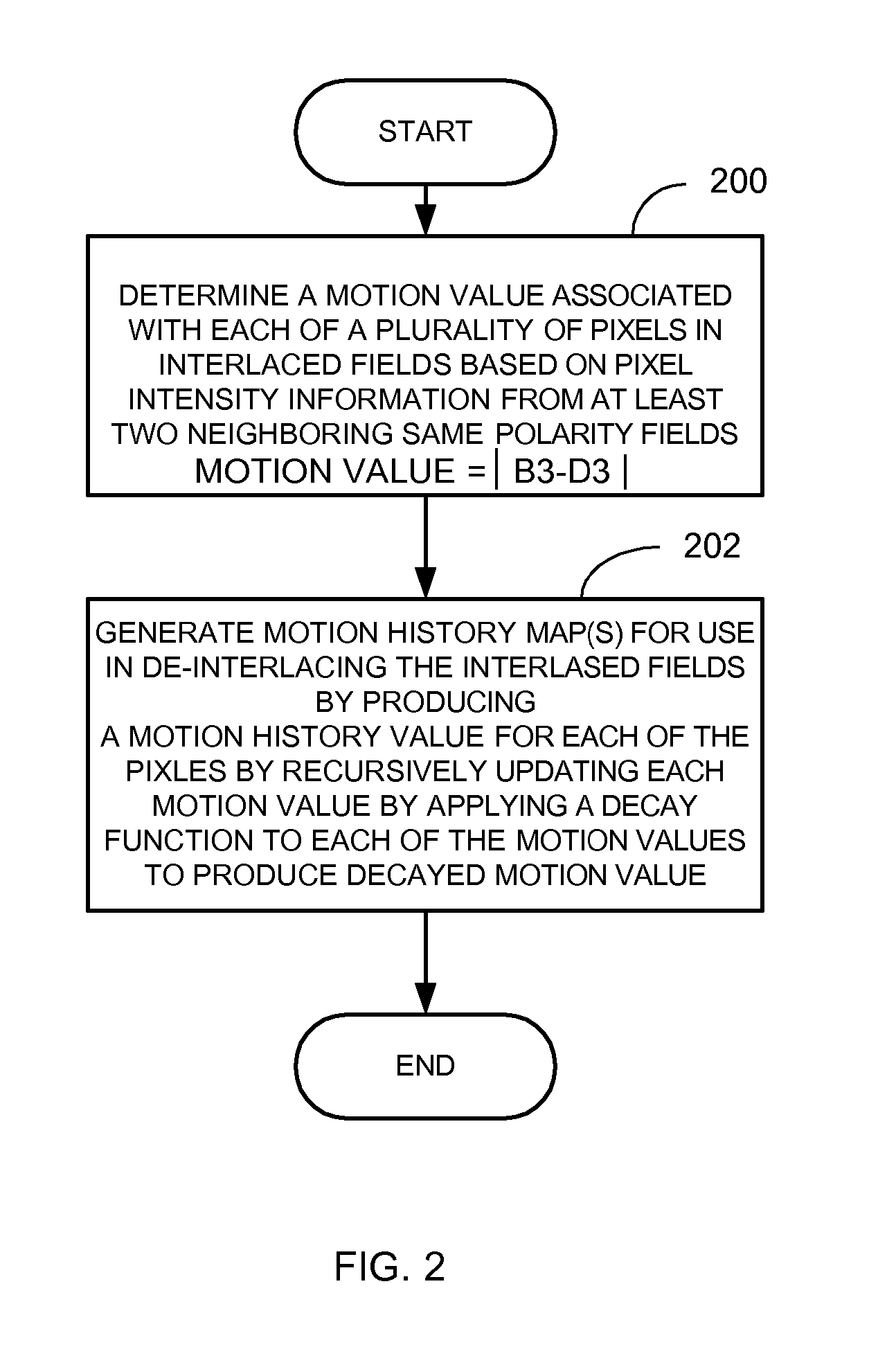Method and de-interlacing apparatus that employs recursively generated motion history maps
a motion history map and video technology, applied in the field of methods and apparatus for deinterlacing interlaced video, can solve problems such as improper motion detection, picture quality problems, and multi-media capabilities of personal computers or other devices
- Summary
- Abstract
- Description
- Claims
- Application Information
AI Technical Summary
Benefits of technology
Problems solved by technology
Method used
Image
Examples
Embodiment Construction
[0022] A de-interlacer includes recursive motion history map generating circuitry operative to determine a motion value associated with one or more pixels in interlaced fields based on pixel intensity information from at least two neighboring same polarity fields. The recursive motion history map generating circuitry generates a motion history map containing recursively generated motion history values for use in de-interlacing interlaced fields wherein the recursively generated motion history values are based, at least in part, on a decay function.
[0023] The de-interlacer also includes de-interlacing circuitry that utilizes the recursively generated motion history values stored in the motion history map to provide de-interlaced output pixel information. In one embodiment, the recursively generation motion history values are used to detect motion and to select whether weaved pixel should be used as the de-interlace technique. The application of the decay function allows for the cont...
PUM
 Login to View More
Login to View More Abstract
Description
Claims
Application Information
 Login to View More
Login to View More - R&D
- Intellectual Property
- Life Sciences
- Materials
- Tech Scout
- Unparalleled Data Quality
- Higher Quality Content
- 60% Fewer Hallucinations
Browse by: Latest US Patents, China's latest patents, Technical Efficacy Thesaurus, Application Domain, Technology Topic, Popular Technical Reports.
© 2025 PatSnap. All rights reserved.Legal|Privacy policy|Modern Slavery Act Transparency Statement|Sitemap|About US| Contact US: help@patsnap.com



